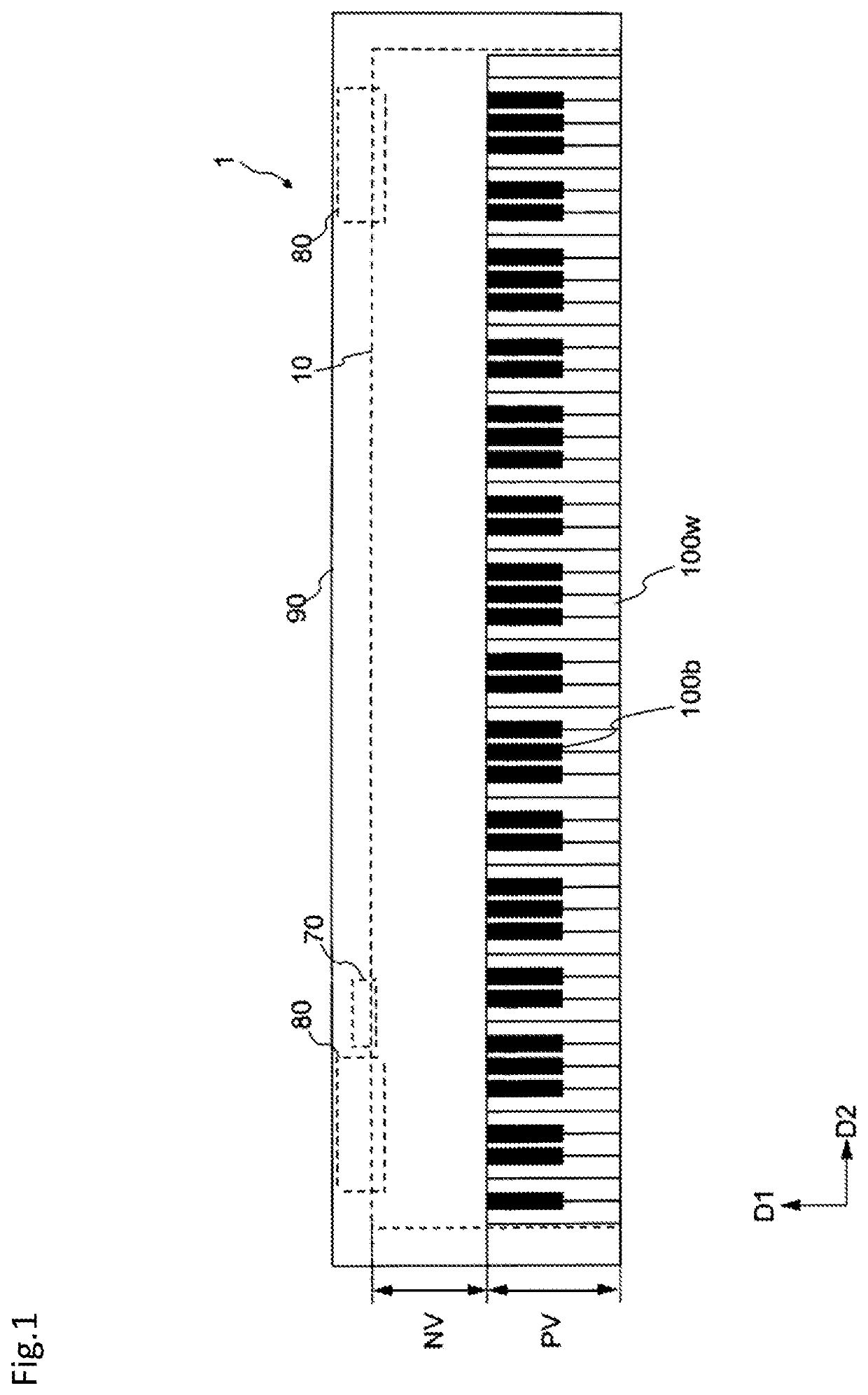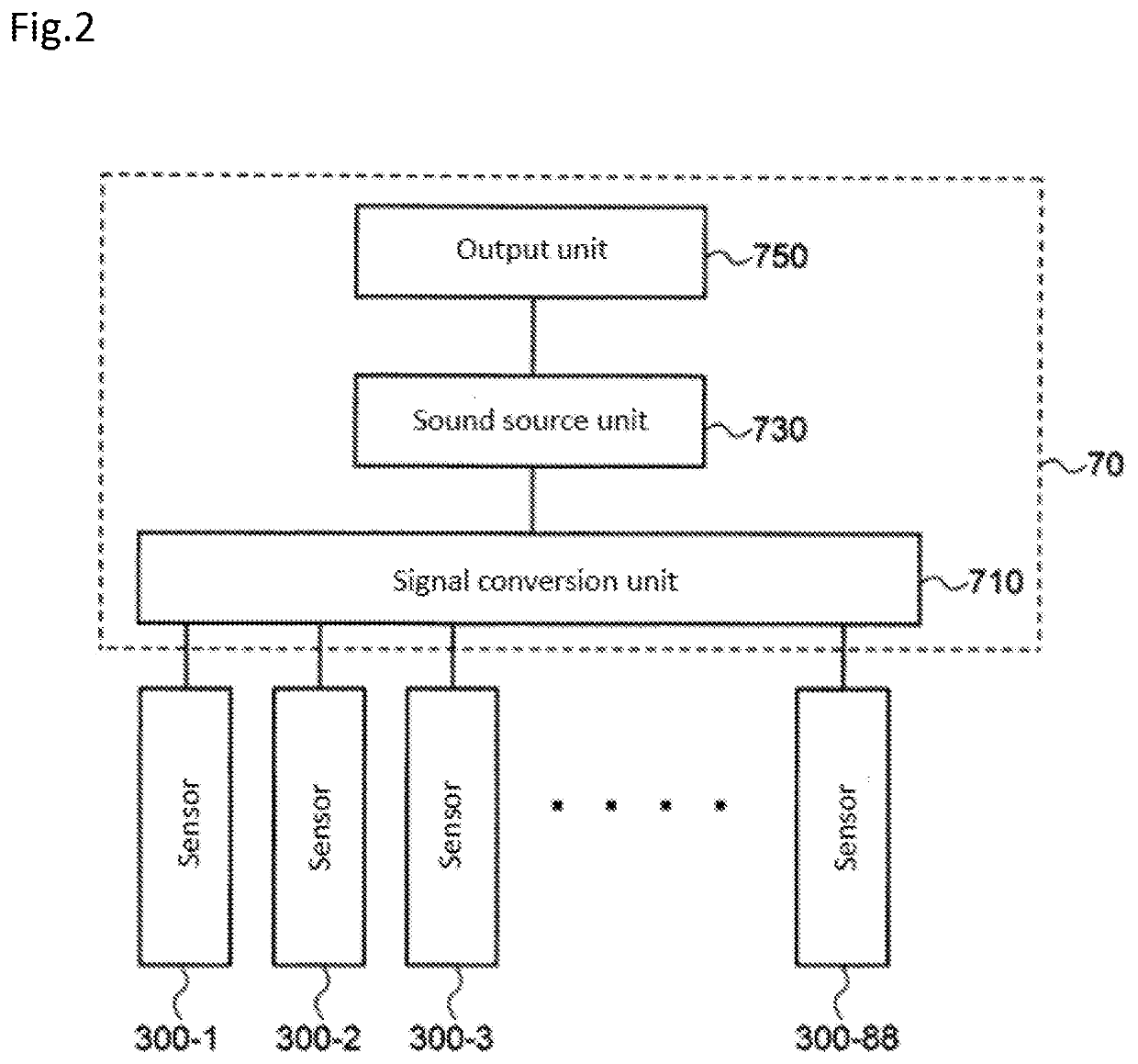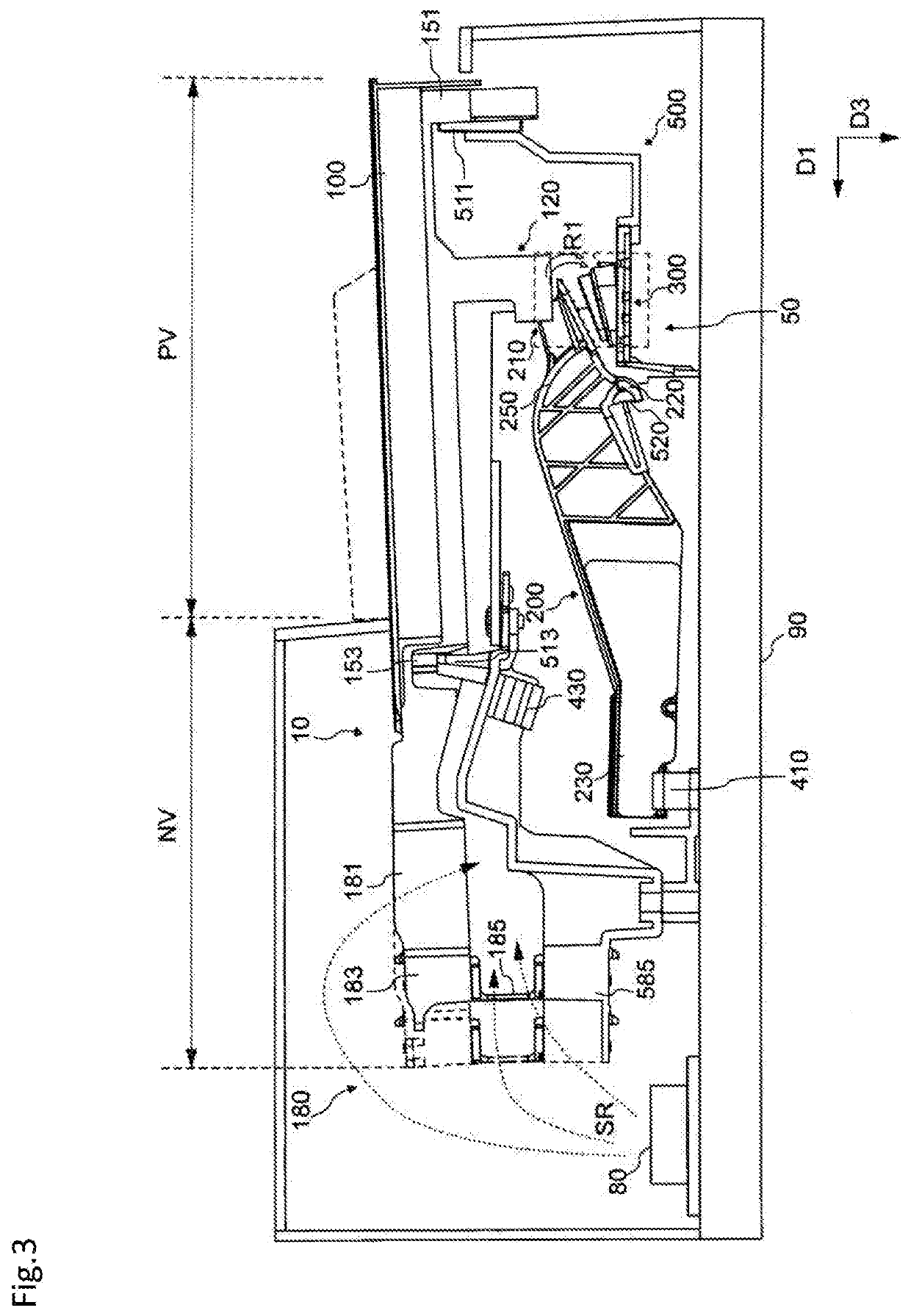Switching device for electronic musical instrument
a technology of electronic musical instruments and switching devices, applied in the direction of instruments, electrotrophonic musical instruments, etc., can solve the problems of sound generation defects, sound generation defects easily occurring, and above-described problems, and achieve the effect of stably generating sound
- Summary
- Abstract
- Description
- Claims
- Application Information
AI Technical Summary
Benefits of technology
Problems solved by technology
Method used
Image
Examples
first embodiment
1-1. Configuration of Keyboard Device
[0039]FIG. 1 shows the configuration of a keyboard device in a first embodiment. In this example, a keyboard device 1 is an electronic keyboard musical instrument such as an electronic piano that generates sound according to key pressing by a user (a player). Note that the keyboard device 1 may also be a keyboard-type controller that outputs control data (for example, MIDI) for controlling an external sound source device according to key pressing. In this case, the keyboard device 1 may not be provided with a sound source device.
[0040]The keyboard device 1 includes a keyboard assembly 10. The keyboard assembly 10 includes white keys 100w and black keys 100b. A plurality of the white keys 100w and the black keys 100b are arranged side by side. The number of keys 100 is N, which is 88 in this example. The direction in which the keys 100 are arranged is referred to as a scale direction (or may be referred to as a direction D2). When the white keys 1...
second embodiment
2. Configuration of Circuit Board
[0075]In the second embodiment, a circuit board 360a having a shape different from that in the first embodiment will be described.
[0076]FIG. 13 is a top view showing a partial extraction of the keyboard device 1. As shown in FIG. 13, in the keyboard device 1, a black key 100b-1 and a black key 100b-2 are respectively arranged among a white key 100w-1, a white key 100w-2 and a white key 100w-3, and thus the shape of each white key is different. Therefore, the direction of the force applied when the player presses is different for the white key 100w-1, the white key 100w-2 and the white key 100w-3. For example, the shape of the white key 100w-1 is symmetrical, so force is easily transmitted in the direction perpendicular to the key. On the other hand, the white key 100w-2 has a so-called L-shape in which the upper right portion is notched out. The white key 100w-3 has a shape that is symmetrical left-right with the white key 100w-2. Therefore, the whit...
PUM
 Login to View More
Login to View More Abstract
Description
Claims
Application Information
 Login to View More
Login to View More - Generate Ideas
- Intellectual Property
- Life Sciences
- Materials
- Tech Scout
- Unparalleled Data Quality
- Higher Quality Content
- 60% Fewer Hallucinations
Browse by: Latest US Patents, China's latest patents, Technical Efficacy Thesaurus, Application Domain, Technology Topic, Popular Technical Reports.
© 2025 PatSnap. All rights reserved.Legal|Privacy policy|Modern Slavery Act Transparency Statement|Sitemap|About US| Contact US: help@patsnap.com



